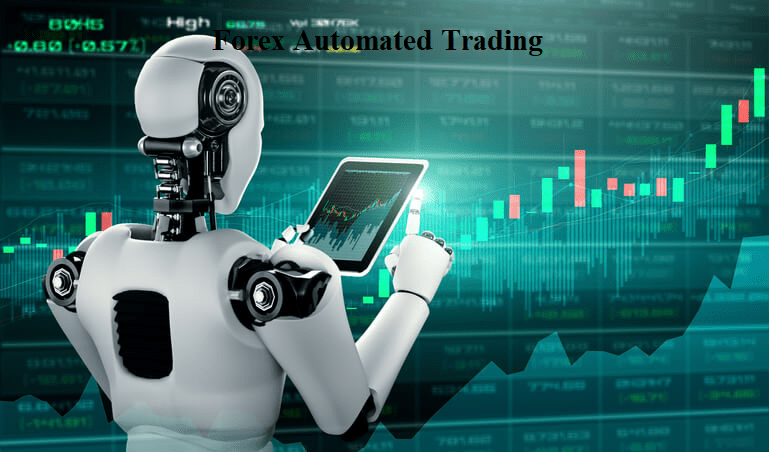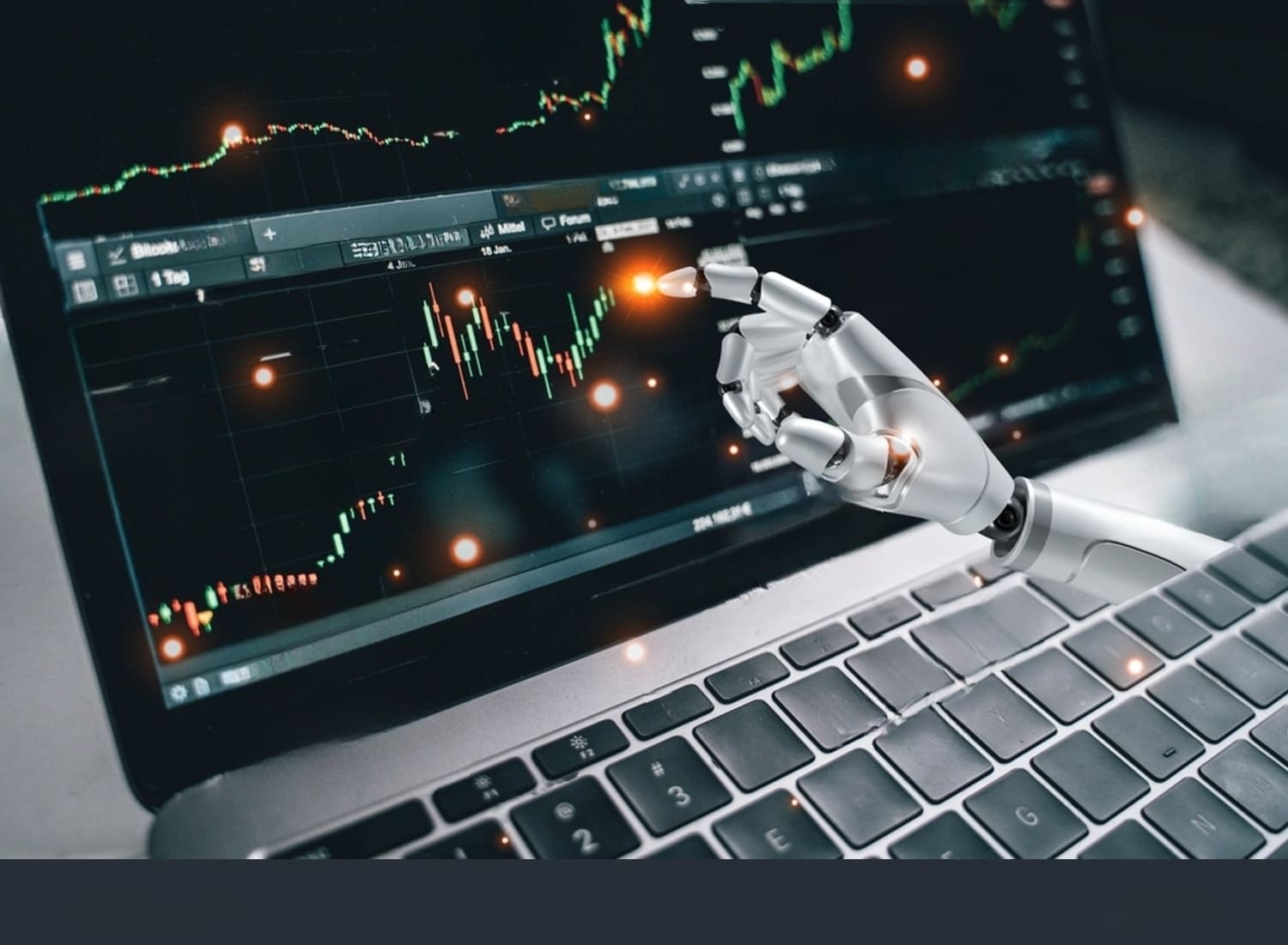Forex automated trading: Using algorithms or bots to execute trades on your behalf.
The foreign exchange (Forex) market, also known as the currency market, is the largest and most liquid financial market globally, with a daily trading volume exceeding $6 trillion. With such substantial trading volume and its 24/5 availability, the Forex market offers ample opportunities for investors to capitalize on currency fluctuations.

In recent years, the advent of technology has revolutionized the financial industry, and Forex trading is no exception. One of the significant developments in Forex trading is the rise of automated trading systems, which utilize algorithms and bots to execute trades on behalf of traders.
This blog aims to delve into the world of Forex automated trading, providing an in-depth analysis of its benefits, risks, and how to choose and implement the right strategy.
Table of Contents
1. Understanding Forex Automated Trading
2. How Forex Automated Trading Works
3. Selecting the Right Automated Trading Strategy
4. Setting up a Forex Automated Trading System
5. The Future of Forex Automated Trading
6. Conclusion
7. FAQs
Understanding Forex Automated Trading
A. What is Forex?
Forex, short for foreign exchange, is the global marketplace for trading currencies. It involves buying one currency while simultaneously selling another. The value of a currency is determined by its exchange rate against another currency. Forex trading takes place in currency pairs, such as EUR/USD, GBP/JPY, or USD/JPY, where the first currency is the base currency, and the second currency is the quote currency.
B. What is Automated Trading?
Automated trading, also known as algorithmic trading or bot trading, is the use of computer algorithms to execute trades automatically. These algorithms are designed to follow predefined rules, strategies, and parameters set by the trader. The primary goal of automated trading is to remove human emotions and biases from the trading process and execute trades with precision and efficiency.

C. The Emergence of Forex Automated Trading
The concept of automated trading has been around for decades, but it was primarily limited to institutional traders due to the complexity and cost of developing such systems. However, with advancements in technology and increased accessibility to computing power, automated trading has become accessible to individual retail traders.
How Forex Automated Trading Works
1. Algorithmic Trading
Forex automated trading systems use complex mathematical algorithms to analyze market data, identify potential trading opportunities, and execute trades. These algorithms consider various technical indicators, historical price data, and market trends to make informed trading decisions.
The speed and accuracy of algorithmic trading systems have significantly increased the efficiency of executing trades. Automated systems can analyze market conditions and execute trades within milliseconds, something nearly impossible for human traders to achieve manually.
2. Benefits of Automated Trading
Forex automated trading offers several advantages:
a) Efficiency and Speed
Automated trading systems can execute trades at high speeds, taking advantage of even the slightest market fluctuations. This speed ensures that opportunities are not missed, and trades are executed promptly.
b) Elimination of Emotions
Human emotions can often lead to impulsive and irrational trading decisions. Automated trading eliminates emotional influences, ensuring that trading strategies are consistently followed based on predefined rules.
c) Back-testing and Optimization
Automated trading systems allow traders to back-test their strategies using historical data, enabling them to assess performance and make necessary adjustments for optimization.
d) Diversification
Automated trading systems can handle multiple currency pairs and trading strategies simultaneously, providing diversification and risk management benefits.
3. Risks and Challenges
While Forex automated trading can be highly beneficial, it is essential to be aware of the associated risks:
a) Technical Failures
Technical issues, such as connectivity problems or software glitches, can disrupt trading operations and lead to potential losses.
b) Over-optimization
Excessive optimization of trading strategies based on historical data can result in strategies that perform well in the past but poorly in real-time market conditions.
c) Market Volatility
Rapid market fluctuations, especially during major economic events, can lead to unexpected outcomes even for automated systems.
Selecting the Right Automated Trading Strategy
To maximize the benefits of Forex automated trading, it is crucial to choose the right strategy and approach. Here are some key considerations:
A. Back-testing
Before implementing an automated trading strategy, it is essential to backtest it using historical data. Backtesting helps to evaluate the strategy's performance over time and under different market conditions, providing valuable insights into its potential effectiveness.
B. Risk Management
Implementing a robust risk management strategy is vital to protect capital and minimize losses. Risk management should include setting appropriate stop-loss and take-profit levels and determining the position size for each trade.
C. Choosing a Reliable Broker
Selecting a reputable and reliable Forex broker is crucial for successful automated trading. Factors to consider include the broker's trading conditions, customer support, and the ability to integrate with automated trading platforms.
Setting up a Forex Automated Trading System
Implementing a Forex automated trading system requires careful planning and execution. Here are the steps to set up an automated trading system:
1. Trading Platform
Choose a reputable and user-friendly trading platform that supports automated trading. MetaTrader 4 and MetaTrader 5 are popular choices among retail traders due to their robust functionalities and extensive support for automated trading.
2. VPS (Virtual Private Server)
Using a VPS is essential for reliable automated trading. A VPS ensures uninterrupted trading operations, even if your local computer experiences connectivity issues.
3. Implementing the Strategy
Once the trading platform and VPS are set up, it's time to implement the chosen automated trading strategy. Carefully configure the strategy's parameters, including entry and exit points, risk management rules, and any other relevant settings.
The Future of Forex Automated Trading
The future of Forex automated trading is promising, as advancements in artificial intelligence and machine learning are expected to enhance trading algorithms further. AI-powered algorithms can adapt to changing market conditions and continuously optimize trading strategies based on real-time data.
Additionally, the integration of social and sentiment analysis into automated trading systems may offer valuable insights into market sentiment and potentially improve trading outcomes.
Footnote
In Summary, Forex automated trading has revolutionized the way individuals and institutions approach currency trading. By harnessing the power of algorithms and bots, traders can increase efficiency, reduce emotional bias, and diversify their portfolios.
However, it is essential to recognize that automated trading is not a guarantee of profits and carries inherent risks. Proper strategy selection, risk management, and continuous monitoring are crucial for successful automated trading.
As technology continues to evolve, Forex automated trading is likely to play an increasingly significant role in the global financial markets, shaping the way traders approach currency trading.
FAQs
Q1: Is Forex automated trading suitable for beginners?
Yes, Forex automated trading can be beneficial for beginners as it eliminates the need for extensive trading knowledge and experience. However, beginners should still understand the basics of Forex trading and the automated strategies they intend to use.
Q2: Are there any hidden costs associated with automated trading?
While some automated trading platforms may charge fees or commissions, it is essential to research and choose platforms with transparent pricing. Additionally, traders should consider potential costs associated with VPS services and data subscriptions.
Q3: Can I rely entirely on automated trading systems for financial success?
Automated trading systems can be powerful tools, but they are not a substitute for sound financial planning and risk management. Traders should approach automated trading as part of a comprehensive trading strategy and not rely solely on automated systems for financial success.











Discussion